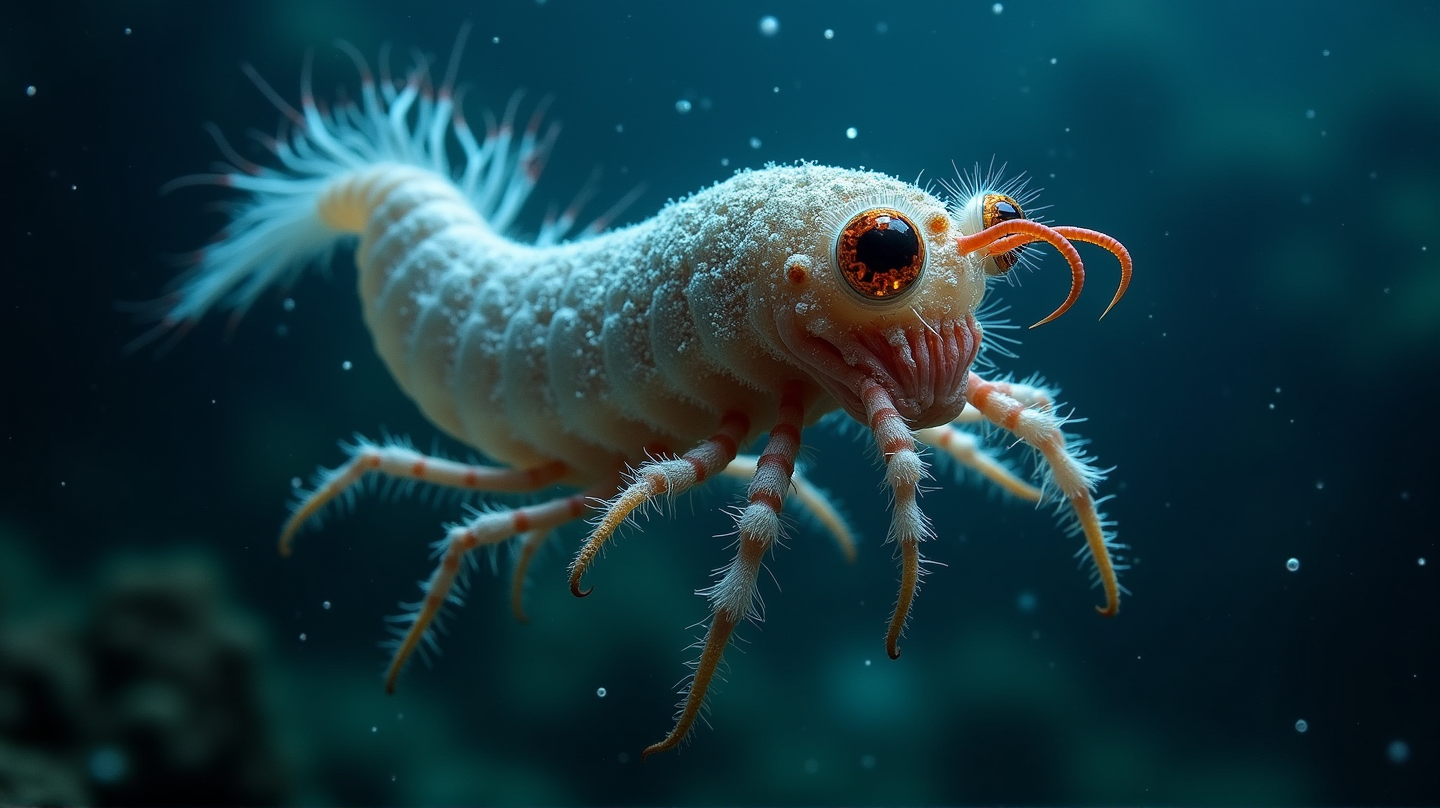Mysterious 'Darkness': Deep-Sea Predator Surfaces From The Depths
Explore the mysterious Dulcibella camanchaca, a terrifying new predator discovered 26,000 feet underwater, igniting curiosity about ocean mysteries.

In the heart of the Pacific Ocean’s abyss, an astonishing discovery has turned the scientific community’s gaze to the unexplored depths: the fearsome Dulcibella camanchaca, a newly discovered amphipod that prowls the Atacama Trench at nearly 26,000 feet below sea level. Dubbed “Darkness,” this small but mighty predator is reigniting curiosity about life in the oceans’ most uncharted territories.
The Abyssal Predator
Dulcibella camanchaca, with its razor-sharp appendages and streamlined body, thrives in a world of complete darkness and crushing pressure. Despite measuring a modest four centimeters, this adept hunter navigates one of the planet’s harshest environments with amazing agility. Named for its dark, mysterious dwelling conditions, and stealing its name from Andean concepts of obscurity, this species demonstrates extraordinary adaptation to extreme depths.
“It’s a fast-swimming predator,” shares Dr. Johanna Weston of WHOI. “It thrives in one of the harshest environments on Earth – and we’re only just beginning to understand how.” Its existence not only adds a new genus to taxonomy but enhances our understanding of evolutionary survival in the deep sea.
The Frontier Awaits
The Atacama Trench, a perilous chasm along South America’s Pacific edge, remains largely uncharted, presenting a significant frontier for marine exploration. The discovery of Darkness signals a more profound ecological complexity within this abyss than previously understood. According to Cruise Mummy, continuing explorations and studies contribute critical insights into these deep-sea environments.
Within this vast trench, life has adapted through bizarre and specialized traits to endure the sparse food supply and perpetual night. Each discovery in this region challenges pre-existing scientific narratives, revealing intricate ecosystems where survival mechanisms are as diverse as they are fascinating.
A Call for Preservation
Amidst the marvels unveiled within the ocean’s depths lies an urgent call to protect these fragile ecosystems. With human activities like deep-sea mining and pollution threatening to intrude upon these isolated worlds, the importance of conservation grows more acute with each new revelation. As researchers look to safeguard the mysteries of the deep, new policies that prioritize ecological sustainability become paramount.
As the scientific community presses forward, exploring new frontiers of our planet, Dulcibella camanchaca emerges not simply as an entry into the annals of marine discovery but as a staunch reminder of our stewardship role in preserving Earth’s least explored habitats. The expedition continues, with each technological advancement bridging our knowledge with the secrets hidden beneath the ocean’s surface.

